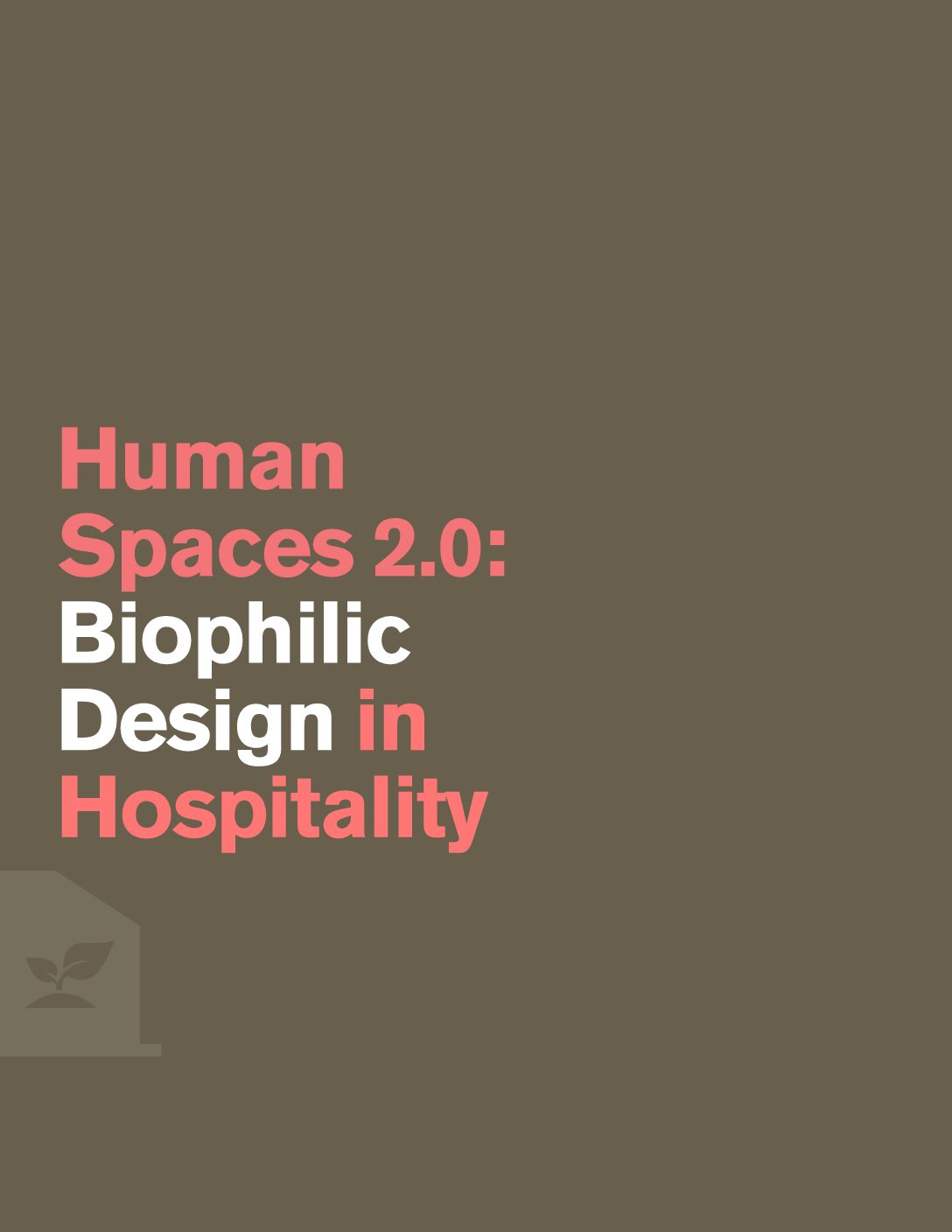Report
Human Spaces 2.0
Biophilic Design in Hospitality
Abstract
The hospitality industry’s focus has been shifting from the guest room experience to the common, shared or public spaces, whereby the hotel lobby becomes the neighborhood living room. First interactive and engaging “boutique” hotels, and now “lifestyle” hotels, have emerged to provide a creative, innovative and socially connective guest experience. With this trend in mind, we began to ask how biophilic design may be serving as a tool in creating or enhancing the specialized guest experience. We took a look at the types of biophilic experiences hotels are offering. In addition to hotel lobbies, we also looked at hotel restaurants, bars, guest rooms, spas and other amenities to understand which biophilic qualities contributed to the identity of a space and how those qualities might uniquely impact the guest experience and behavior.
As a follow-up to Human Spaces 1.0: “The Global Impact of Biophilic Design in the Workplace”, we used the “14 Patterns of Biophilic Design” (Browning, Ryan, & Clancy, 2015) as a contextual framework for conducting on-site surveys of guest rooms and amenities at 15 hotels around the world. A more refined online survey was also distributed to our global network of designers and marketing and sustainability professionals to expand the sample set to a combined total of 39 hotels. This report looks at the results of these two surveys and the design trends found among different hotel and resort amenities and what it might mean for the industry as it continues to evolve with guest health and well-being as a primary differentiator both for the guest experience and the brand’s bottom line. The primary takeaway is that a Visual Connection with Nature, Prospect Conditions and a Material Connection with Nature were on average the most frequently or consistently utilized design patterns in all hospitality amenities and hotel rooms.
An additional analysis of a handful of hotels in a shared market in New York City suggests that biophilic experiences can change the use patterns of public hotel spaces. These hotels are also more likely to market themselves – by way of their website – as having a deliberate connection with nature, and how such a connection makes their guest experience unique. This relationship – between design intent and marketing message – reveals yet another opportunity to explore correlations between a hotel’s intuitive or learned awareness of the value of biophilic design and its potential value in brand recognition, enhanced guest experience, or contribution to ancillary revenue streams. These early correlations are intriguing and warrant further research.
Inside This Report
Opening Message from Bill Browning
Executive Summary
Research Methods and Results
Analysis of Industry Trends
Appendix
Case Studies
Collaborators
Sponsor: Interface Inc.
Author: Terrapin Bright Green
Contributor: Gensler

